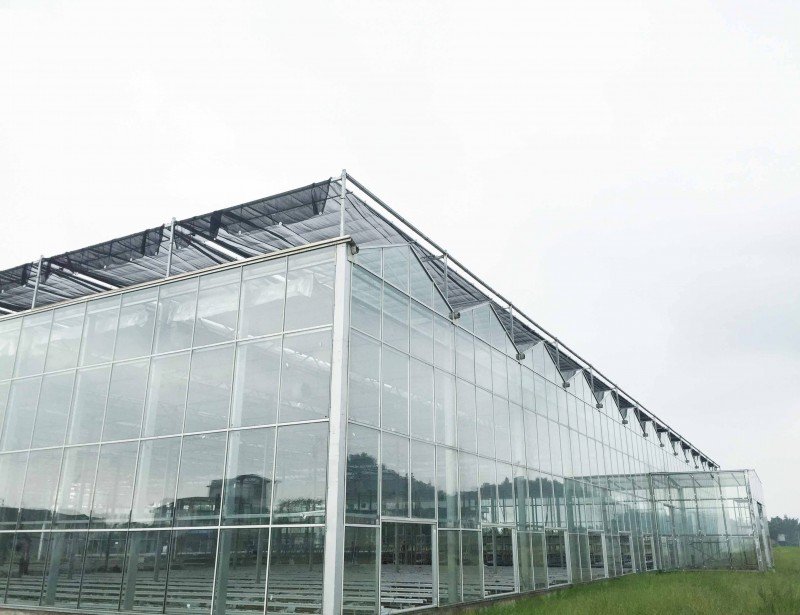Are you looking for the best greenhouse covering to maximize your crops’ potential? With so many options available, choosing the right covering can be overwhelming. You want something that balances cost, durability, and light transmission. But which one should you choose? In this post, I’ll break down the most used types of greenhouse coverings, highlighting the pros and cons of each, so you can make an informed decision for your greenhouse.
Introduction: Learn about the most commonly used greenhouse coverings and how each one can benefit your growing environment. Explore options like polycarbonate, polyethylene, glass, and shade nets.

Greenhouse coverings play a crucial role in providing the perfect environment for plants. Whether you’re growing vegetables, flowers, or cannabis, the covering material determines how much light, heat, and humidity your plants will receive. The most popular types of greenhouse coverings are polycarbonate sheets, polyethylene film, shade nets, and glass. Each has its own strengths, making them suitable for different growing needs. Let’s dive deeper into each material.
Why is choosing the right greenhouse covering so important?
Choosing the right greenhouse covering isn’t just about aesthetics—it’s about creating the best environment for your plants. If the material doesn’t allow enough light in or traps too much heat, your crops could suffer. On the other hand, too much light can dry out your plants or overheat them. The right covering also helps with energy efficiency, preventing heat loss in colder climates. So, it’s vital to understand the pros and cons of each type.
The Top Types of Greenhouse Coverings
1. Polycarbonate Sheets
Polycarbonate is often considered the gold standard for greenhouse coverings. It’s durable, provides excellent insulation, and offers superior light diffusion. This material is especially beneficial in cooler climates because it helps maintain a consistent temperature inside the greenhouse. Polycarbonate sheets come in single, double, and triple-wall options, each offering varying degrees of insulation.

Pros:
- Excellent insulation
- Durable and long-lasting
- Good light diffusion
- UV resistant
Cons:
- Expensive
- Difficult to install (requires proper framing)
For more in-depth information, check out this detailed article on polycarbonate greenhouse coverings.
2. Plastic Film
Polyethylene is one of the most commonly used greenhouse coverings because it’s lightweight, affordable, and easy to install. It’s available in single and double layers, and some versions have UV resistance and anti-drip coatings to reduce condensation. Polyethylene film is perfect for larger-scale greenhouses where you need a cost-effective solution without compromising too much on performance.

Pros:
- Affordable
- Easy to install
- Good light transmission
- Lightweight
Cons:
- Less durable (typically lasts 4-6 years)
- Prone to tearing in windy conditions
For more information on polyethylene greenhouse materials, visit this resource on polyethylene coverings.
3. Glass
Glass is the traditional greenhouse covering, offering unbeatable aesthetics and light transmission. It’s often used in high-end, commercial greenhouses or those designed for ecological tourism. The main drawback is the cost and weight of glass, which can make installation more expensive. However, glass is durable and long-lasting, often lasting decades with proper care.

Pros:
- Excellent light transmission
- Aesthetic appeal
- Long-lasting
Cons:
- Expensive
- Requires strong structure to support weight
- Poor insulation properties
To learn more about glass greenhouse systems, you can visit this informative article on glass coverings.
4. Shade Nets
Shade nets are not a covering in the traditional sense but are essential in protecting plants from excessive sun exposure. They are commonly used alongside other greenhouse coverings or in open-air structures to control light intensity. Shade nets come in various densities and colors to cater to different crops’ light requirements.

Pros:
- Protects from UV damage
- Affordable
- Available in different shades for various crops
Cons:
- Doesn’t provide full protection from weather conditions (like rain or wind)
For more on shade net benefits, check out this guide on shade net materials.
A Quick Comparison Chart
| Greenhouse Covering | Light Transmission | Insulation | Durability | Cost | Ideal For |
|---|---|---|---|---|---|
| Polycarbonate | High | Excellent | Very High | High | Cold climates, long-term use |
| Polyethylene | Good | Moderate | Low | Low | Large-scale, short-term use |
| Glass | Excellent | Poor | Very High | Very High | Aesthetics, commercial greenhouses |
| Shade Nets | Moderate | Low | Moderate | Low | High-sun regions, additional coverage |
More Related Questions
How long do greenhouse coverings last?
The lifespan of greenhouse coverings depends on the material used. Polycarbonate sheets can last up to 20 years, while polyethylene typically lasts 4-6 years. Glass and shade nets, with proper care, can last for decades.
What greenhouse covering is best for hot climates?
For hot climates, materials like shade nets and polyethylene film are ideal. They allow enough light while reducing the risk of overheating. Polycarbonate can also be used in double-wall form to improve insulation and reduce heat.
What is the best greenhouse covering for growing cannabis?
For cannabis cultivation, polycarbonate and polyethylene film are popular choices due to their light diffusion and insulation properties. These materials help maintain the optimal environment for cannabis growth.

Conclusion
Choosing the right greenhouse covering is vital for ensuring your crops thrive. Whether you’re growing vegetables, flowers, fruits, or medical cannabis, the right material will provide the optimal environment for plant growth. Each covering option has its pros and cons, but with a little research and careful planning, you can select the perfect one for your needs.

